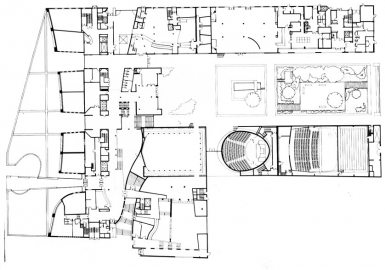National Superior Conservatory of Dance and Music
All the southern entrance to the Parc de la Villette, The Cité de la Musique is composed of two grand wings, each quite different, which contrast with and complement each other from both sides of the Grand Hall. To the west are all the areas reserved for teaching and public spaces while to the east are the areas open to the public notably the concert halls, practice rooms and the instrument Museum. Thus, the Cité de la Musique forms a unique collection of places devoted to music and dance which increase the influence and stature of the National Conservatory.
This western part contains two large families of spaces. The first, that of study areas, is composed of a large number of small and medium-size rooms (studios, study halls, listening rooms, interdisciplinary studios, and halls for organ, orchestra and jazz). The acoustical requirements make superimposition of the large halls difficult and expensive. Therefore, they occupy the bottom layer as a base, at the heart of terrain, and in order to facilitate the movement of instruments they are encircled by a crown in the superstructure which houses the music classrooms. The entry building is divided into four north-south bands separated by hallways of light. On the south side, facing the boulevard, the study halls are grouped in four-storey blocks as the street facades of the four bands. Between each block, a large open space illuminates the connecting areas. These four buildings are crowned by a large inclined plane which binds them together into a single whole and which acoustically protects the study halls.

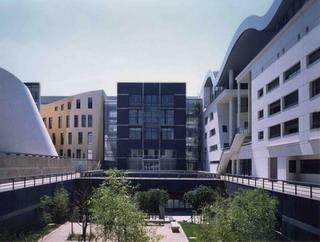
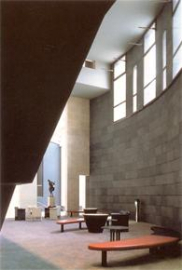
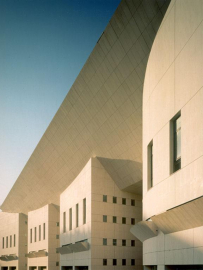
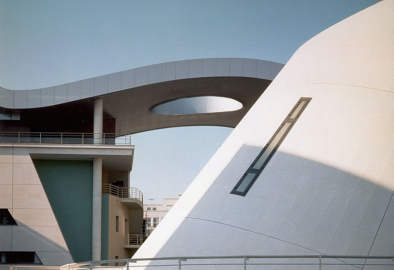
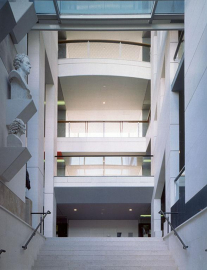
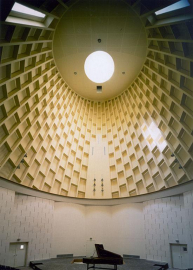
.jpg)
.jpg)
